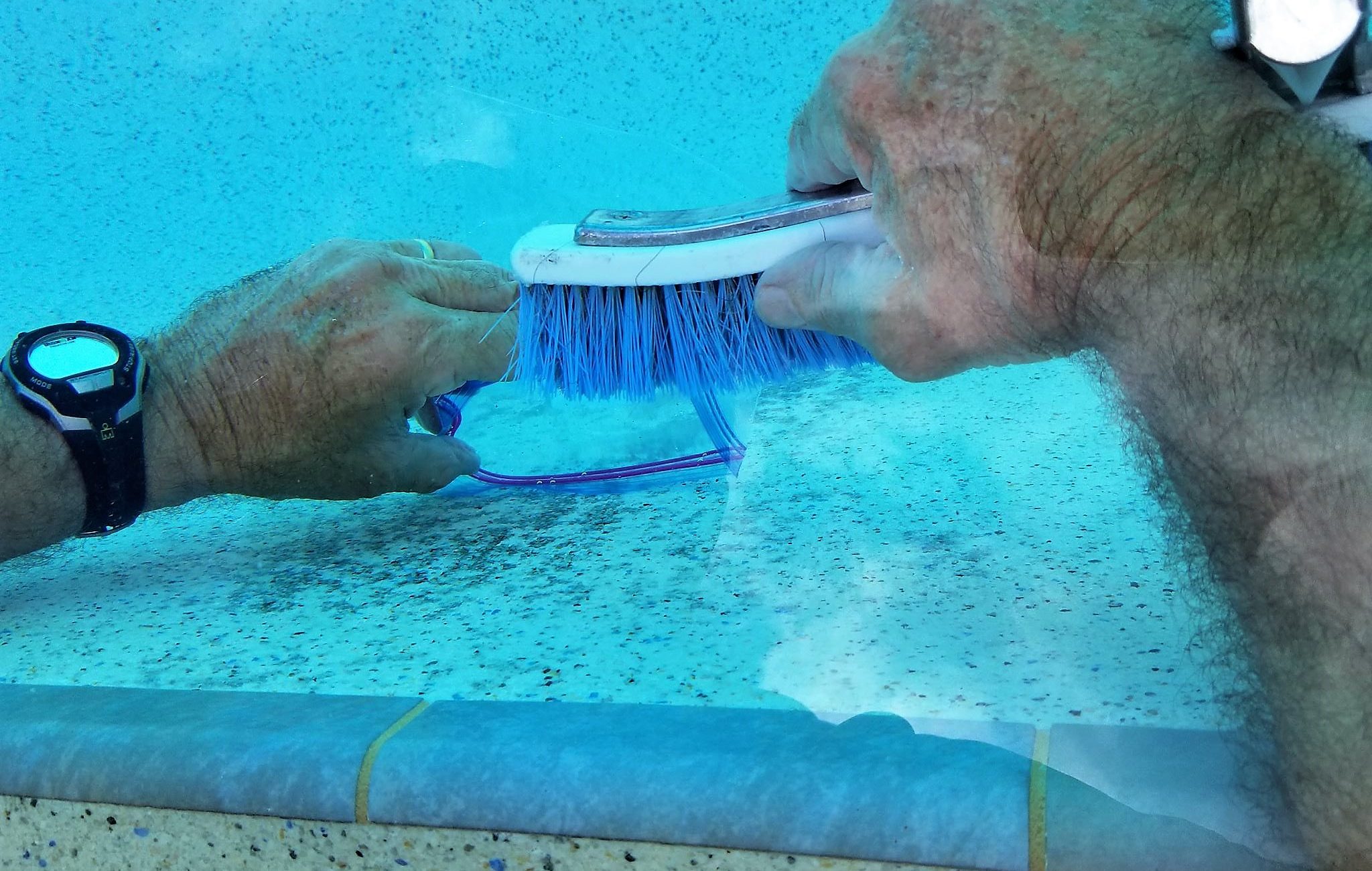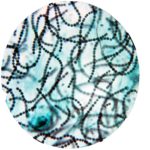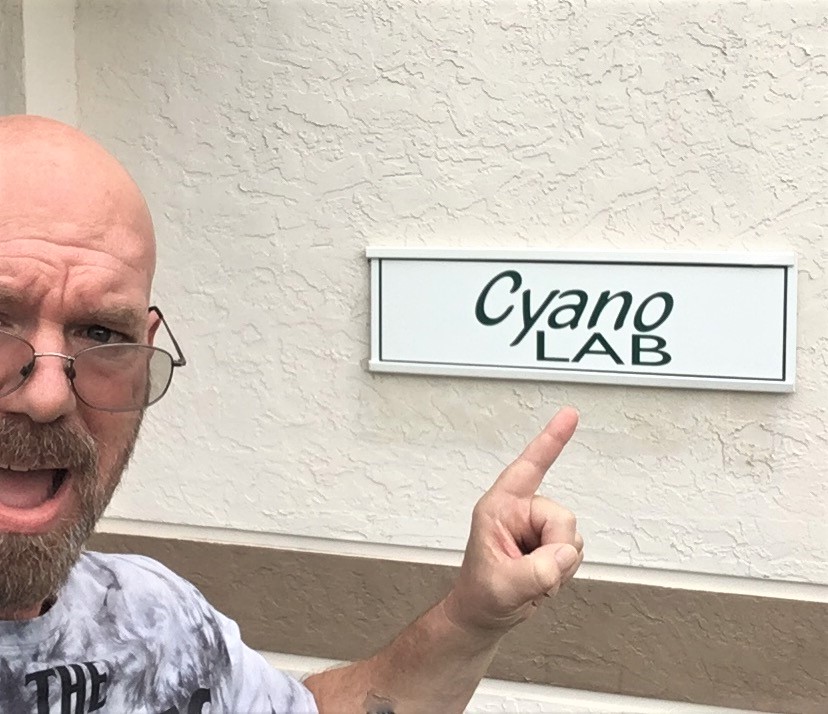And The Biofilm Thickens

If you have been following along you already know that we have been doing some things with “Black Algae”. Initially, the goal was to put together something informational on swimming pool algae as a resource piece for the folks who take my classes. Sadly, when I sat down to do this, I discovered that there really was not much out there. I suppose I could have passed on the topic, but instead I opted to do the research myself. Our findings have gained a bit of attention; folks at the top of their field in the industry have mentioned that we are the first people to even look at swimming pool “black algae” in 40 years. See the results of our initial study: the Black Algae myth.

I have since learned from conversations I have had with algaecide manufacturing companies that most product tests of algaecides are not conducted on actual swimming pool algae. Instead, it is conducted on algae grown in labs believed to be similar to that which grows in pools. Therefore, the products are being tested, but not in the field and not on actual swimming pool “algae”. This makes an actual field test, such as we have done, extemely interesting. See the results of our algaecide field study: Black Algae Copper Experiment.
With our identification of “black algae” as cyanobacteria, and understanding that certain genus (including those we had identified in our samples) are known to be toxin producing, the next logical step would be to test swimming pool “black algae” for the presence of cyanotoxins. We would again require specimens. Earth Science Laboratories, who had supplied the copper sulfate pentahydrate for our field study, has offered to collaborate with us in this initial test in the next phase of our research.
We hypothesize, that if toxins are found, the level of chlorine maintained in public/residential swimming pools (minimum acceptable level: 1 mg/L ) will neutralize any toxins produced (or released upon lysing) on contact.
It was not long before new colonies were located. Lisa Arquilla Dodge of Pool Care Pros in Jacksonville Florida had a newly acquired account (public pool) with “Black Algae” that she had yet to begin treatment on in the Atlantic Beach area. Colonization was not as established as we had hoped for, however it was more than adequate for specimen collection.
As I was out of state on business travel teaching, Fred Singleton (B.S. in Microbiology from Clemson University, Master of Science from the University of Texas, Ph.D. from Texas A&M University), Senior Scientist of Microbiology at Earth Science Laboratories, would offer to meet with Lisa Arquilla Dodge at the facility in order to collect our new specimens. The microbiologist would insure proper handling throughout transport and delivery to the laboratories in Palatka Florida where we will submit for identification and, depending on the result, analytical work-up on the water and biomass.
Our “Black Algae” samples were delivered to Mark Aubel at GreenWater Laboratories on October 4, 2018. With an outbreak in the Okeechobee to deal with, I was not expecting a rapid turnaround on our results. GreenWater Laboratories is one of the top research labs in cyanobacteria toxin analysis in the United States.
We received the analysis on October 16, 2018, which was much quicker than anticipated. The information was surprising and added another dimension to our “algae” research. The Atlantic Beach specimens would again confirm that “black algae” is not algae, but also that all “black algae” are not created equal. In a lecture given by Darla Goeres Ph.D. (Montana State University, Center for Biofilm Engineering) on biofilms I had recently attended at the World Aquatic Health Conference, Dr. Goeres explains that the inhabitants of biofilm communities often vary greatly by geographic location. Still, I did not anticipate a tremendous difference in what we would see in specimens that had been collected from swimming pools that were just shy of a two-hour drive apart.
The Atlantic Beach samples did not contain Nostoc sp., Microcoleus and Oscillatoria as we had identified in our Gainesville colonies. Our new specimens contained the filamentous cyanobacteria Leptolyngbya sp. This is a noteworthy discovery evidencing that the composition of swimming pool “black algae” can differ greatly with variables such as distance, and in as little as 100 miles, This mirrors Dr. Goeres’ statements on biofilm as a whole. We have also positively identified several species of true algae (below) that take harbor in the cyanobacteria’s exopolysaccharidic secretions, which allows us to refer to “black algae” as a Collective Cyanobacteria Community; a biofilm with cyanobacteria as the dominant constituent. We can assume the inhabitants of the biomass to vary by geographic location as well.
Leptolyngbya sp. is a cyanobacteria not known to be toxin producing. With this discovery, we opted not to proceed with the analytical work up. We would need to find cyanobacteria in our biomass identical, or similar, to that found in our initial specimens. Then, depending upon species (300 species of Nostoc alone are known to exist), proceed with our analytical work-up.
The search continues…
During the analysis of our Atlantic Beach specimens, GreenWater Laboratories was also able to identify Aulacoseira ambigua and Aulacoseira herzogii (diatoms), Staurastrum sp., an unknown dinoflagellate, and small Chlorophyta unicells within the biomass.
GreenWater Laboratories Qualitative Algal Identification Report: Wet mounts were prepared from the Atlantic Beach Pool sample collected on 10/3/18. Slides were observed at 100X and 400X using a Nikon Eclipse Ti-S Inverted Microscope equipped with phase contrast optics and epi-fluorescence. The most abundant algae in the sample were species of the filamentous blue-green alga (Cyanobacteria) Leptolyngbya sp. (Figs. 1-4 shown in the above report).
Interesting Rudy. I think it points to the importance of conducting a larger study where a number of pools are sampled to look for trends and how and if the trends correlate to certain pool parameters (indoor vs. outdoor, disinfectant used, maintenance schedule, typical swimmer profile, etc.). It also demonstrates the importance of validating the efficacy of a product in a field trial(s). At the end of the day, the best approach may be tailored treatment plans that are optimized for each pools similar to the “personalized medicine” trend. Good work! – Darla Goeres Ph.D., Center for Biofilm Engineering, Montana State University
We did, however, find another pool with colonization and this time certain genus found in our samples were known to be toxin producing. To see the next write up in our series on Black “Algae”, Click Here: Does Black Algae Produce Toxins?
Special thanks to: Lisa Arquilla Dodge of Pool Care Pros in Jacksonville Florida, Dr. Fred Singleton of Earth Science Laboratories, Mark Aubel and the team at GreenWater laboratories, & Earth Science Laboratories


